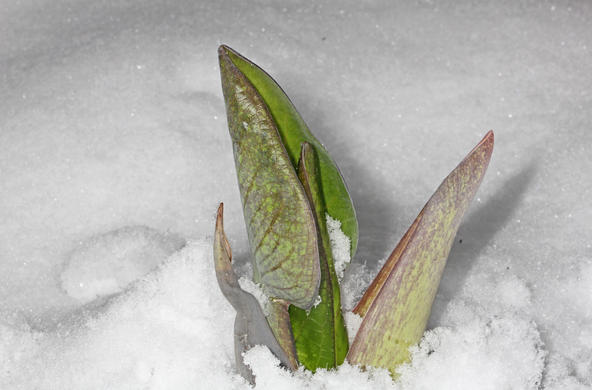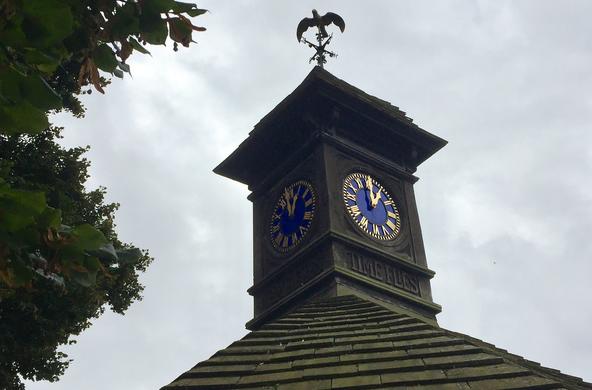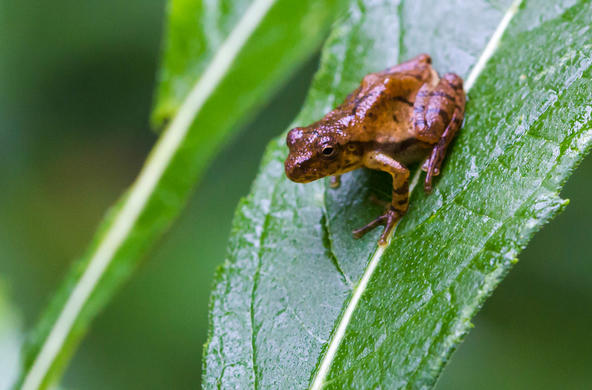Nina Smiley thinks people seem to feel invigorated in October. “The crisp mountain air heightens awareness of the brilliant jewel-toned leaves that are changing daily around us,” said Smiley, director of marketing at the Mohonk Mountain House in New Paltz. “It’s the perfect time to get outside and experience the changing landscape.”
Yet that brilliant display of trees’ colorful leaves in the fall is less about a seasonal celebration than it is about the trees’ preparation for the coming winter.
Shorter, cooler days signal a slow-down for lots of living things, including green-leaved deciduous trees, which lose their mint tint with the weather change. The leaves’ glorious green comes from an abundance of chlorophyll, a plant chemical pigment use during photosynthesis, the process by which sunlight enables carbon dioxide and water to be converted into food for the plant, according to the New York State Department of Environmental Conservation.
Because of the fall’s shorter days, less sunlight is available to the trees, gradually easing the production of chlorophyll from lesser amounts to none. As a result, the normally dominant green tone of the trees’ leaves subsides, making way for the leaves’ inherent lesser colors to surface in a showcase of reds, oranges, golds and purples.
Specifically, the state DEC reports, red and violet colors are part of a group of anthocyanins pigments that absorb excess energy from the sun, preventing damage to sensitive leaf tissues.
Vicky Kelly, manager of the environmental monitoring program at the Cary Institute of Ecosystem Studies in Millbrook said trees have evolved methods for coping with our winters over thousands of years, the biggest trigger of which is shortened days.
“There’s a window —and it’s a pretty big window — which the day-length tells the trees, now it’s time to reabsorb the chlorophyll and get ready for winter,” she said, whereby the chlorophyll is broken down and reabsorbed into a tree’s twigs until the chemical is needed for new growth in the spring.
Kelly said although the leaves of different species of trees turn color at different times — right now, for instance, oaks still have their green leaves, while sugar maples have dropped nearly all of their color-turned leaves — a current study by the U.S. National Phenology Network, of which the Cary Institute is involved, is looking at the degree to which weather conditions, such as drought, heat and other factors, affect the timing of when leaves change color.
“We’re embarking on a program where we’re going to start to monitor, really carefully, data on when leaves start to turn on different species of trees and when they actually lose their leaves,” she said.
It’s all part of a larger cycle, since dropped leaves provide food for insects, which feed larger animals. With that, environmental concerns, like the presence of ozone, a secondary pollutant, can have an effect on plant growth and the health of a tree, causing it to shed leaves prematurely to conserve energy.
“Over time, if we start to see leaves become inedible; changing color then dropping off earlier or out of sync with the lives of those insects, that certainly is going to have an effect on animals,” Kelly said.
Marek D. Rzonca, owner of The Foliage Network, www.foliagenetwork.com, that reports on foliage in more than a dozen states in the Northeast, Southeast and upper Midwest, said while hot, dry summers can compromise leaf health and cause muted fall colors, this year’s fall offers a bright showing.
“This year, the summer was relatively cool, with mostly normal precipitation,” said Rzonca, who’s based in Ballston Lake, Saratoga County. “The result has been a great year for the fall foliage.”
Frosts and freezes, he said, are believed by some to benefit foliage, but the opposite is true, as the conditions damage leaves and can cause them to drop early, especially in repeated frost/freeze cycles.
“Mild, sunny autumn days coupled with cool, crisp evenings are what get the colors going,” Rzonca said. “This fall, we had an extended period of these conditions and that led to a slightly early season in parts of the Northeast, especially the Adirondacks.”
Rzonca said among the foliage standouts in the northeast are sugar maples, whose leaves turn a vibrant orange and bright red in the fall, while in the western part of the U.S., birch and aspens put on yellow display.
This year, Mohonk Mountain House has a curated map for leaf-peepers, including highlights of where to see the region’s finest foliage and outdoor activities, said Smiley, including the Walkway Over the Hudson, mountain and road biking trails, horseback riding venues, local orchards and more.







